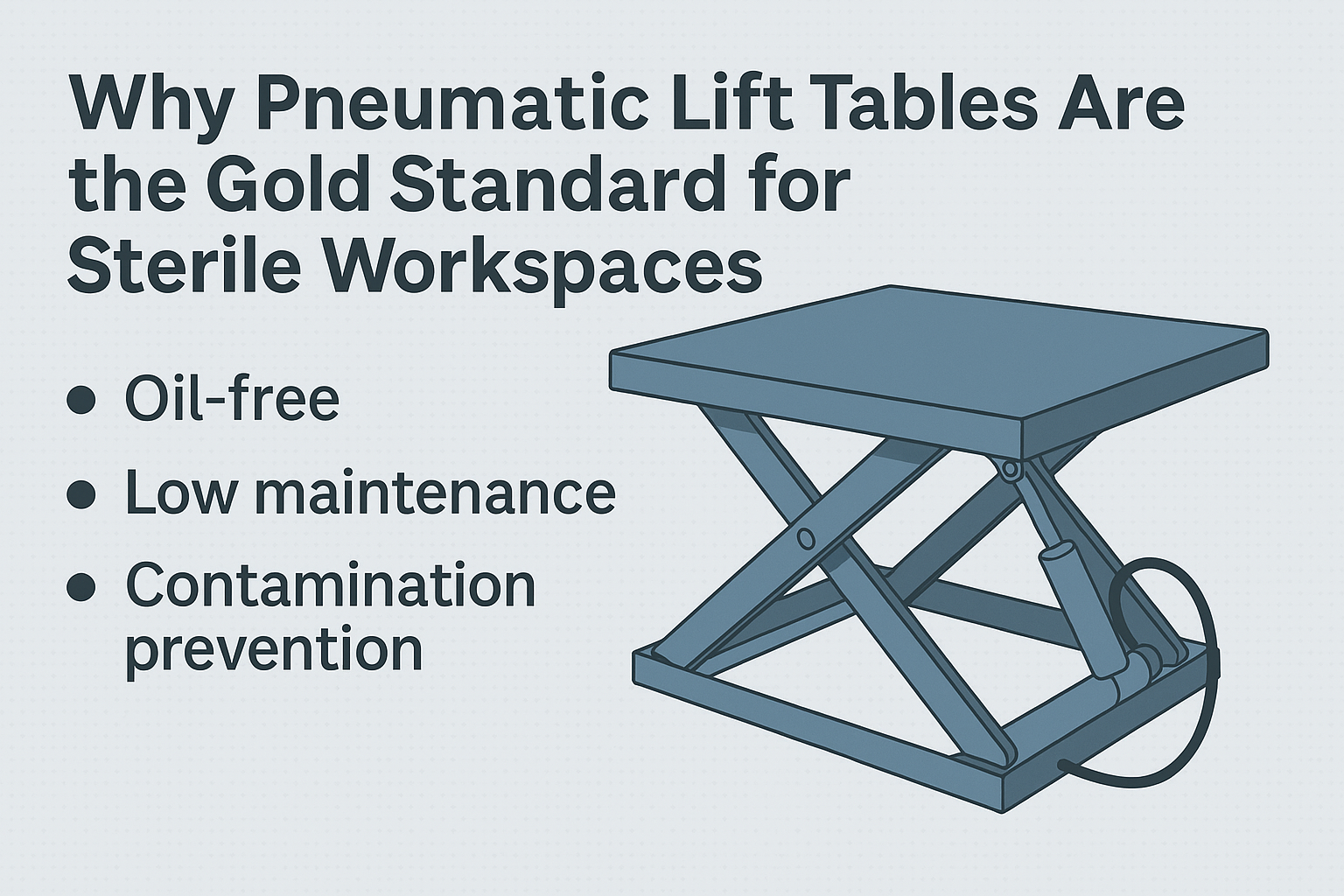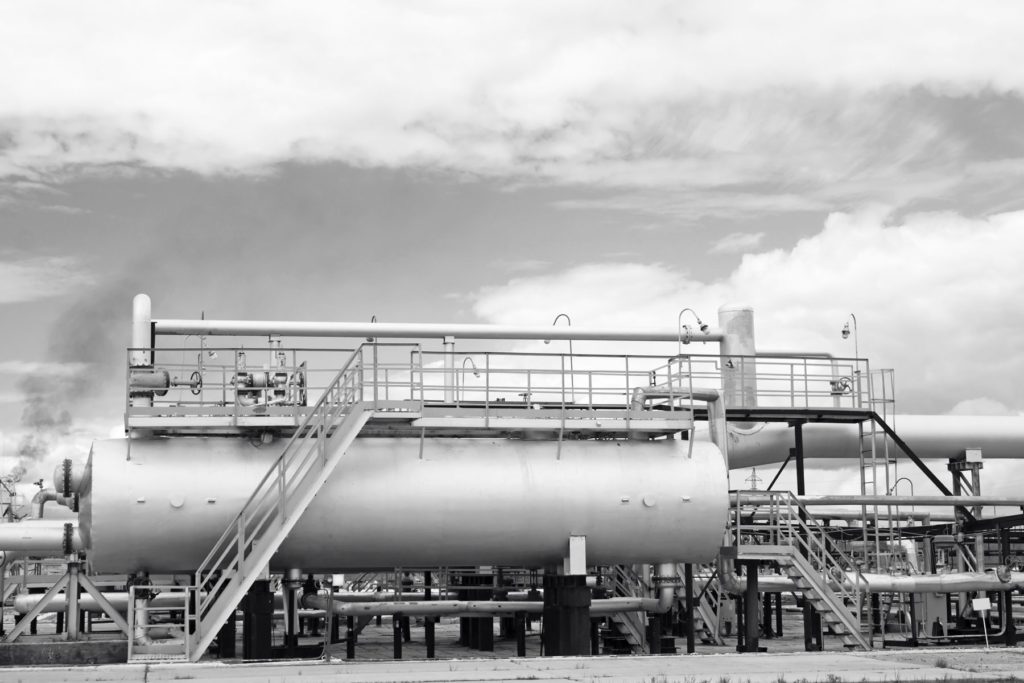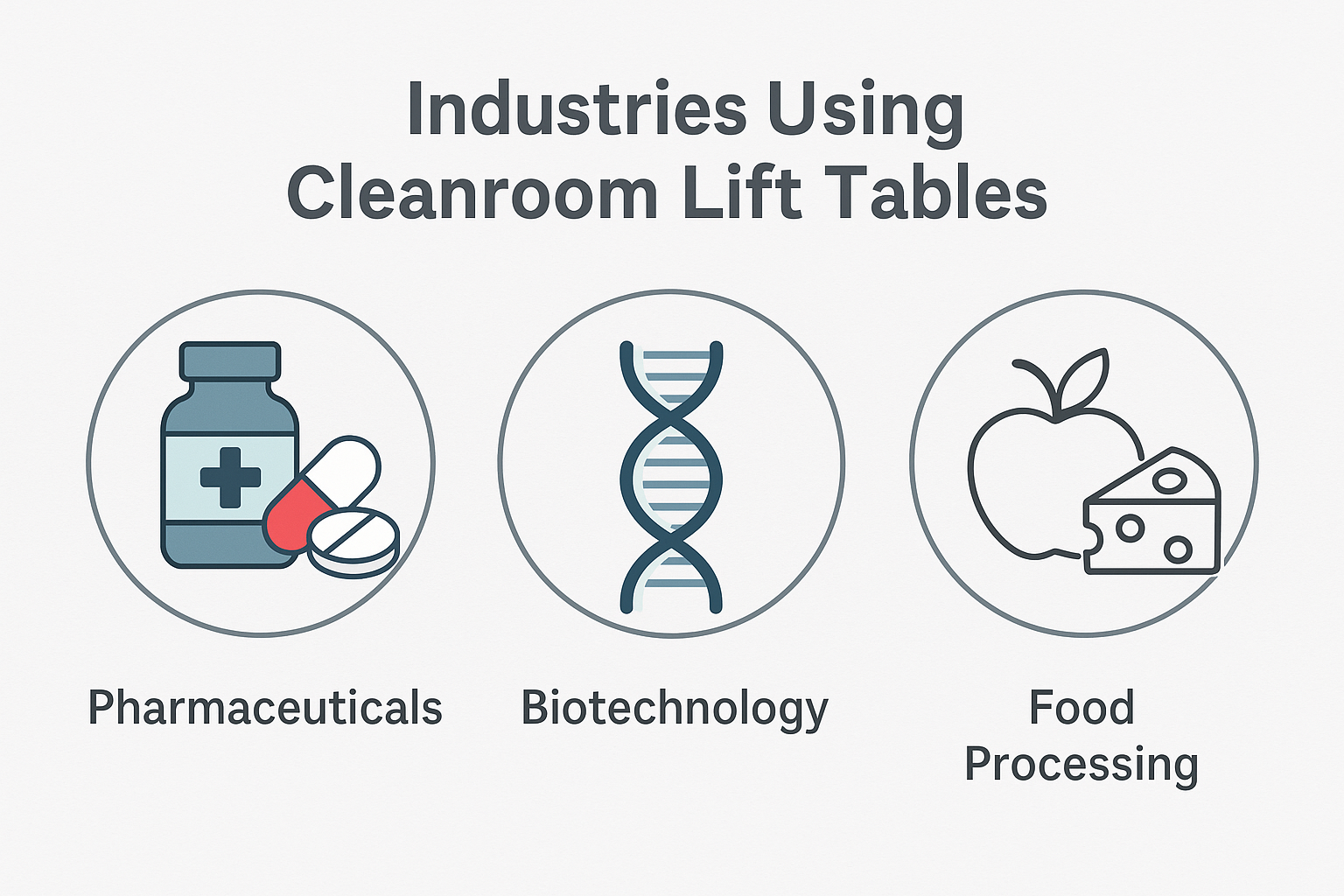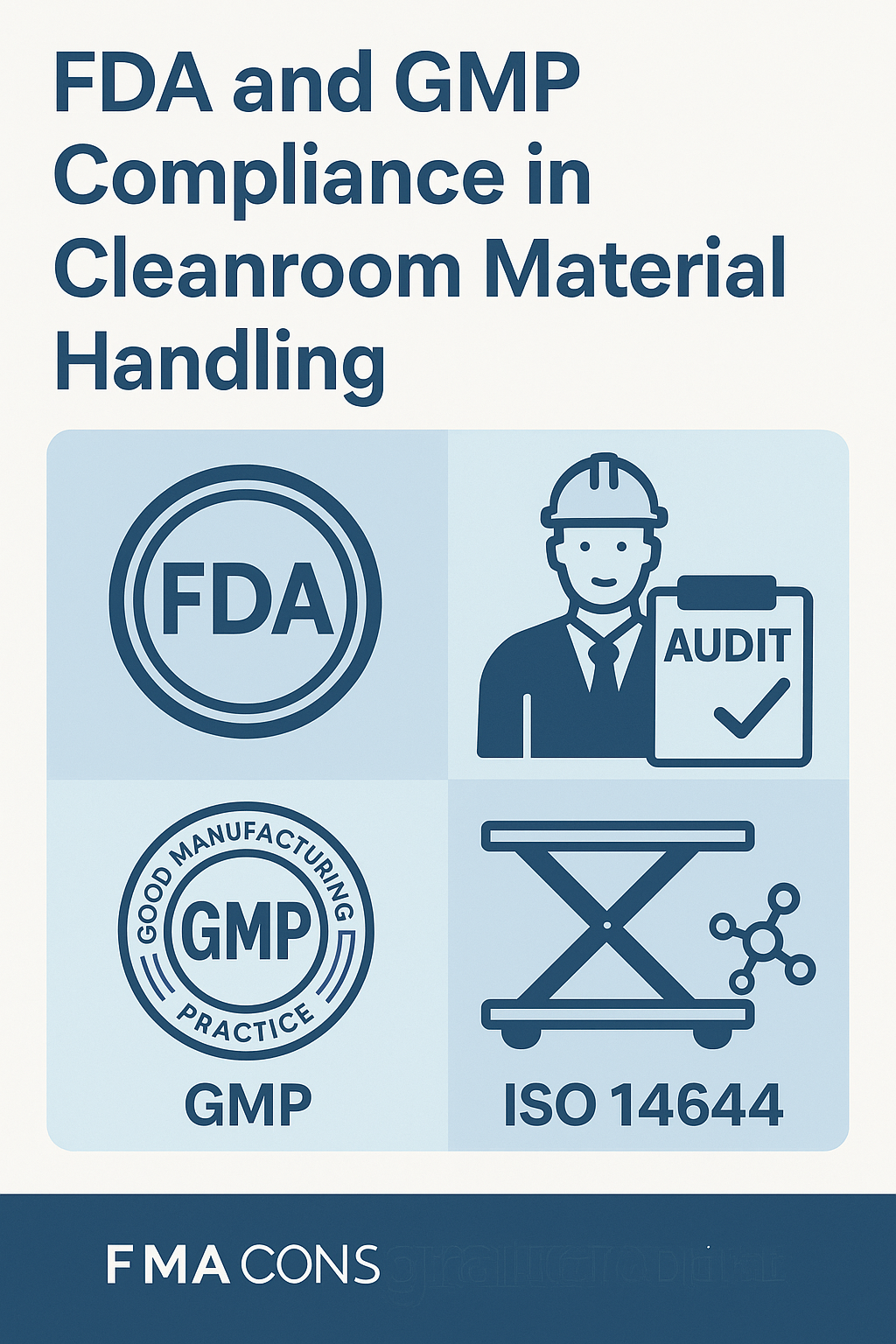
Why Pneumatic Lift Tables Are the Gold Standard for Sterile Workspaces
Explore why pneumatic lift tables outperform hydraulic and electric options in sterile environments. Clean, safe,
Your looking for a way to improve your business. Profits might not be where you want them to be. You might have some workers that are not as productive as they could be. Sometimes you need to change out workers because the right person isn’t in the right job, but sometimes it could be your equipment that is at fault.
If you’re looking to improve your bottom line, then your equipment assets are going to be the cornerstone for those improvements.
Let’s take a look at a few specific examples.
You needs great tools in order to do great things with your business. The only problem is that it seems like these items are just out of the reach of your current budgetary requirements. So often the focus is placed on productivity when measuring the ROI of the tools that get used for a business, ignoring another important measurement: efficiency.
Business efficiency is defined as the performance or function of a best practice or possible action with the least amount of time or effort involved. This shouldn’t be confused with “effectiveness,” which is your business doing the right things. That’s important as well, but doing things right is just as important as doing the right things.
Tricky.
Yet depending on the scope of your business venture, you could lose millions of dollars in overall productivity. With better equipment, you’ll become more efficient. When you become more efficient, you’ll be effective at what you do.

In our industry, profitability happens when you’re able to meet deadlines, provide high quality services, and move quickly from task to task. You need good people to make that happen, but the first step toward profitability is to have the resources in place that can let those good people do what they do best.
Once these resources are in place, then you’ll be able to take these additional steps so that you can maximize your chances at being profitable.
You may not be in the construction industry, but Leslie Shiner, MBA has put together 10 steps toward building a more profitable business that takes a very pragmatic approach to the relationship between efficiency, effectiveness, and making money.
“Good communication during a project with all parties involved,” says Shiner, “may lead to strong relationships even after the project has ended and may frequently result in new referral business.”
What happens when your equipment asset breaks down? Many businesses take what we like to call the “wait and react” approach. How many times have you heard someone say, “If it ain’t broke, then don’t fix it?”
Except when your equipment breaks down in the middle of a job, you’re losing time and money trying to fix it. That’s no good at all.
You need some way of managing your maintenance needs so that you can have your equipment working as consistently as possible. If you don’t have anything in place right now, then we highly recommend considering some form of equipment maintenance software.
CNET Magazine has access to 850+ equipment maintenance software downloads for you to consider so you can be more proactive in this area. Down time is lost money. Bringing in new equipment is important, but so is managing your existing resources.
There are a number of government safety regulations which are present in our industry today. From the design specs of a platform to the MSDS for everything that we use to get the job done, everything must meet or exceed the current standards that are in place. If not, every violation brings with it the potential to pay thousands of dollars in fines.
Here’s the issue many businesses don’t take into account: if you’re using equipment that is 15 years old, it was build based on the safety standards that were in place at that time. There is a good chance that it might not be up to code, even though you’ve used the equipment safely over that entire period of time.
This leaves you with two options: upgrade that equipment or purchase new equipment that meets current government safety standards.
Take our industrial maintenance platforms for example here. They bring a number of key benefits to your business, meet or exceed current standards, and it’s all done for a reasonable price – especially when compared to the costs of being out of compliance.
When you’re evaluating your equipment assets, don’t overlook the issue of safety. It could be a costly mistake.
The customer perspective cannot be overlooked when it comes to the equipment assets you have. It is the value proposition your organization will use to satisfy your clients. You might promise to get the job done by a certain time and with a certain quality – that’s value.
Customers don’t just look at the end result to determine if the value proposition is good. They’ll also look at every step it takes to create that end result as well. If you’re bringing in equipment that breaks down all the time, pollutes the job site, and looks like the FBI used it for target practice, then this will be a negative reflection on your business.
Your equipment assets need to dress up to impress. You need equipment that will help to keep you organized. If you run a warehouse and can’t find something specific in your inventory or you can’t reach something without a worker taking a major risk, you’ll lose business. Why? Because the value proposition isn’t good enough.
We don’t always think about it, but equipment assets have another important role: they let your clients see that you can get the job done.
Let’s say you’ve got a light bulb that needs to be changed in an aircraft hangar. It’s 45 feet in the air. How are your workers going to reach that work area so they can change out the bulb?
It’s like a bad joke: how many workers does it take to change a light bulb?
With the right equipment available for the job, the correct answer would be “one worker.” That’s because you’ve made it possible for them to safely and accurately access the necessary job site.
When a budget is tight, it can be very tempting to make your equipment assets do multiple jobs for you. The only problem with this is that it costs you money in the long run. Let’s compare the use of one of our scissors lifts to the use of a vertical ladder as we change this light bulb.
Assuming everything works perfectly, let’s say the entire job takes 30 minutes to complete. Except in the case of the vertical ladder, it actually takes up to 90 productivity minutes because you might have three workers involved instead of one. Now multiply that extra 60 minutes into wages, benefits, training costs… as you can see, having the right equipment for the right job eventually pays for itself compared to “making do” with what you currently have as assets.
A landscaper gets pulled out by a homeowner for an estimate on a complete overhaul of the property. In order to provide an accurate estimate, the landscaper must know three specific pieces of information.
If the materials and labor estimate is accurate, then the landscaper can quote the homeowner a price that will turn a profit. If there is a mistake in that estimate, the landscaper could end up losing money on the project – especially if there is a contract that dictates the financial terms of the project.
And if there isn’t a contract in place for the estimate, the landscaper will tarnish the reputation of their business if they bill more than expected.
The same is true for your business, no matter what industry you may be in. If you don’t fulfill a promised value proposition, then you’ll find that your clients will vote with their dollars and choose to do their business elsewhere.
If you’re using older equipment, then you’re not going to be able to quote a competitive estimate because it’s going to take you longer to get the job done. If you don’t have equipment assets in place that can help you accurately measure the size and scope of a job, you’re essentially guessing at what it will take to get the job done.
Maybe you’re using one of the best telescoping boom lifts for a tree trimming business or to perform maintenance tasks on an aircraft – either way, better equipment makes it possible to increase your profits because you can do the same job in less time than someone with outdated equipment.
It’s easy to think that an equipment investment isn’t necessary for your business, especially when money is tight. Thinking in the short-term is important, but so is the creation of a long-term plan. If you’re using a ladder when you really should be using a lift, then you’re losing profits with every job you take.
Many of the equipment assets which are available today are surprisingly affordable. There are also several used equipment options that may be available to meet your needs so that you can still upgrade your equipment, but with a lower overall cost. There is always an answer that can be found.
If you’re looking for solutions in the industrial man lifts industry, then we invite you to take a few moments to contact us today about what your needs may be. One of our service representatives can answer whatever questions you may have, discuss what equipment assets may be the best option for your current needs, provide a request for quote, and much more.
Good people need good equipment. Good equipment can bring you good profits. It’s an equation that really can’t be ignored any more.

Explore why pneumatic lift tables outperform hydraulic and electric options in sterile environments. Clean, safe,

From pharma to semiconductors, see how top industries use cleanroom lift tables to maintain compliance,

Understand what makes a lift table truly FDA and GMP compliant. Explore the must-have features,
Copyright 2025 All Rights Reserved – Industrial Man Lifts